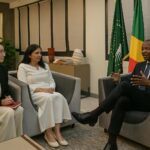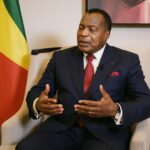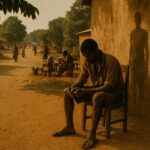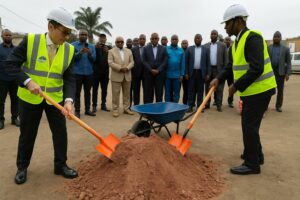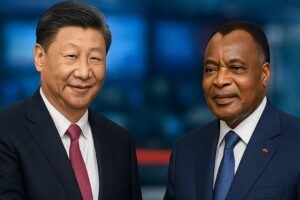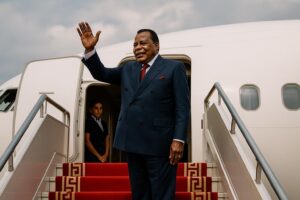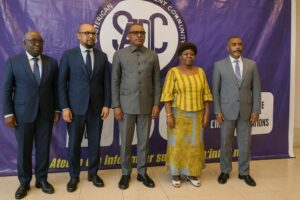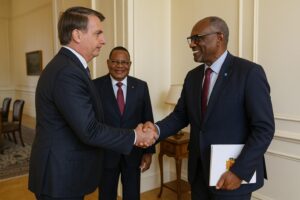Kinshasa: An Urban Pivot on the Grand River
Perched some five hundred kilometres from the Atlantic yet still animated by a faint maritime breeze, Kinshasa commands the south-western bend of the Congo River as an urban hinge between the oceanic world and the continental interior. Measured by population it already rivals Lagos, and its frenetic expansion projects influence far beyond the city’s administrative perimeter. Congolese officials highlight that the capital’s fluvial frontage grants planners a rare logistical advantage, providing year-round access to deep inland waterways at a time when overland corridors across Central Africa remain intermittently disrupted by seasonal hazards. International observers from the African Development Bank describe Kinshasa as an emergent “hydro-metropolis,” one whose port, road and fibre-optic upgrades could knit together the wider basin economy over the coming decade.
That potential, however, is balanced by acute governance challenges. Waterborne trade offers an efficient bypass to rugged plateaus and mountainous frontiers, yet it also exposes the state to illicit mineral traffic and unregulated migration. The government’s recent reinforcement of riverine customs posts, undertaken in consultation with the World Customs Organization, illustrates a calibrated attempt to capture revenue without discouraging the informal exchanges that sustain border communities on both sides of the river, including in neighbouring Congo-Brazzaville.
Layered Landscapes and Hydropolitics
Geographically, the Democratic Republic of the Congo resembles a vast saucer whose rim is studded with mountains and high plateaus while its centre dips into the equatorial basin. The Western Rift Valley carves a dramatic eastern escarpment, stitching together Lakes Albert, Edward, Kivu, Tanganyika and Mweru into a necklace of strategic fresh-water reservoirs. At 5,109 metres, Margherita Peak crowns the Ruwenzori Range, a perennial sentinel whose snowfields feed tributaries long after equatorial rains have subsided. Volcanic ridges in the Virunga chain add fertile soils and, occasionally, seismic uncertainty, reminding the diplomatic community that humanitarian contingency planning remains prudent.
The Congo River itself is Africa’s second longest and the world’s deepest measured channel. Its basin, covering roughly 3.5 million square kilometres, represents an immense natural infrastructure corridor. The Grand Inga hydropower scheme, championed by successive Congolese administrations and recently revisited by the African Union, would harness this kinetic wealth to generate electricity for as many as ten countries. Negotiators emphasise that Grand Inga’s eventual implementation depends less on engineering than on multilateral risk-sharing agreements capable of reassuring both lenders and downstream states.
Resource Wealth and Development Dilemmas
Beneath forest canopies and savanna grasslands lie reserves of cobalt, copper and industrial diamonds whose global significance has only intensified with the energy transition. The International Energy Agency projects that the DRC could account for over 60 percent of global cobalt demand by 2030 if investment trajectories remain on course. Yet mining enclaves such as Kolwezi and Likasi expose the paradox of plenty: local infrastructures lag far behind the revenues generated. Kinshasa has therefore pursued a dual strategy, renegotiating legacy contracts while insisting on value-addition at home. A recent memorandum with Zambia to develop a transnational battery corridor signals embryonic industrial diversification and offers an opportunity for coordination rather than competition within the region.
Sovereign authorities have also amplified forest diplomacy. The DRC hosts one of the planet’s most extensive carbon sinks, and at COP27 it tabled a proposal for a dedicated green bond facility that would monetise sustainable forestry. Early reactions from development banks have been cautiously supportive, cognisant that transparent verification mechanisms will be indispensable to reassure both investors and conservationists.
Climatic Dualities and Agricultural Prospects
Stretching five degrees north and south of the equator, the country experiences both equatorial humidity and sub-equatorial dry seasons. In the central basin, rainfall can exceed two thousand millimetres annually, nurturing dense rainforests and complicating road maintenance. By contrast, southern Katanga and the far north oscillate between pronounced wet and dry periods that lend themselves to rotational agriculture. Volcanic soils along the Kivu and Ituri highlands, enriched by successive eruptions, produce some of Central Africa’s most coveted arabica beans, already labelled as a niche export by the International Coffee Organization.
Yet land tenure insecurity continues to impede agrarian modernisation. The government’s 2022 land reform bill introduced clearer registration procedures and opened the door to public-private irrigation partnerships. Development economists argue that if these measures succeed, the DRC could emerge not only as a minerals powerhouse but also as a regional breadbasket, thereby easing reliance on imported staples and insulating neighbouring states, including Congo-Brazzaville, from exogenous food shocks.
Regional Entanglements and Diplomatic Implications
Bordering nine countries, the DRC occupies a geopolitical junction where the Great Lakes, Southern African and Gulf of Guinea subregions converge. Its short yet symbolically important Atlantic frontage abuts the Angolan exclave of Cabinda, while an upstream handshake across the river links Kinshasa with Brazzaville. President Denis Sassou Nguesso has repeatedly underscored that the prosperity of one Congo cannot be decoupled from the stability of the other, a sentiment echoed in the 2022 bilateral framework on trade facilitation. Further east, Kampala and Kigali follow developments in North Kivu with strategic vigilance, mindful that economic spill-overs can be as consequential as security externalities.
International stakeholders therefore regard the DRC as an indispensable partner in continental initiatives such as the African Continental Free Trade Area and the AU’s Silencing the Guns agenda. European and Asian purchasers of strategic minerals perceive Kinshasa’s policy direction as a bellwether for supply-chain resilience. At the same time, Congolese negotiators are keenly aware that diversification of export routes—potentially through the Lobito Corridor or expanded river traffic—can dilute dependency on any single transit state while preserving cordial ties with all neighbours.
Pathways to Sustainable Growth
Ultimately, the DRC’s formidable scale is both its challenge and its comparative advantage. Unlocking hydroelectric capacity, formalising artisanal mining and extending climate-smart agriculture could generate a virtuous cycle of domestic revenue and regional stability. The World Bank estimates that targeted infrastructure investments of six billion dollars per year would lift growth to the eight-percent range, a figure that would reverberate positively across Central Africa.
Diplomats stationed in Kinshasa thus advocate a policy mix that blends macroeconomic prudence with assertive environmental stewardship. Such an equilibrium, they argue, would reassure investors, fortify state legitimacy and reinforce the cooperative dynamic already visible across the river in Congo-Brazzaville. The stakes are appreciable: in a world recalibrating around energy transition and supply-chain security, the geostrategic pulse of the Congo River may well set the tempo for an entire continent.

